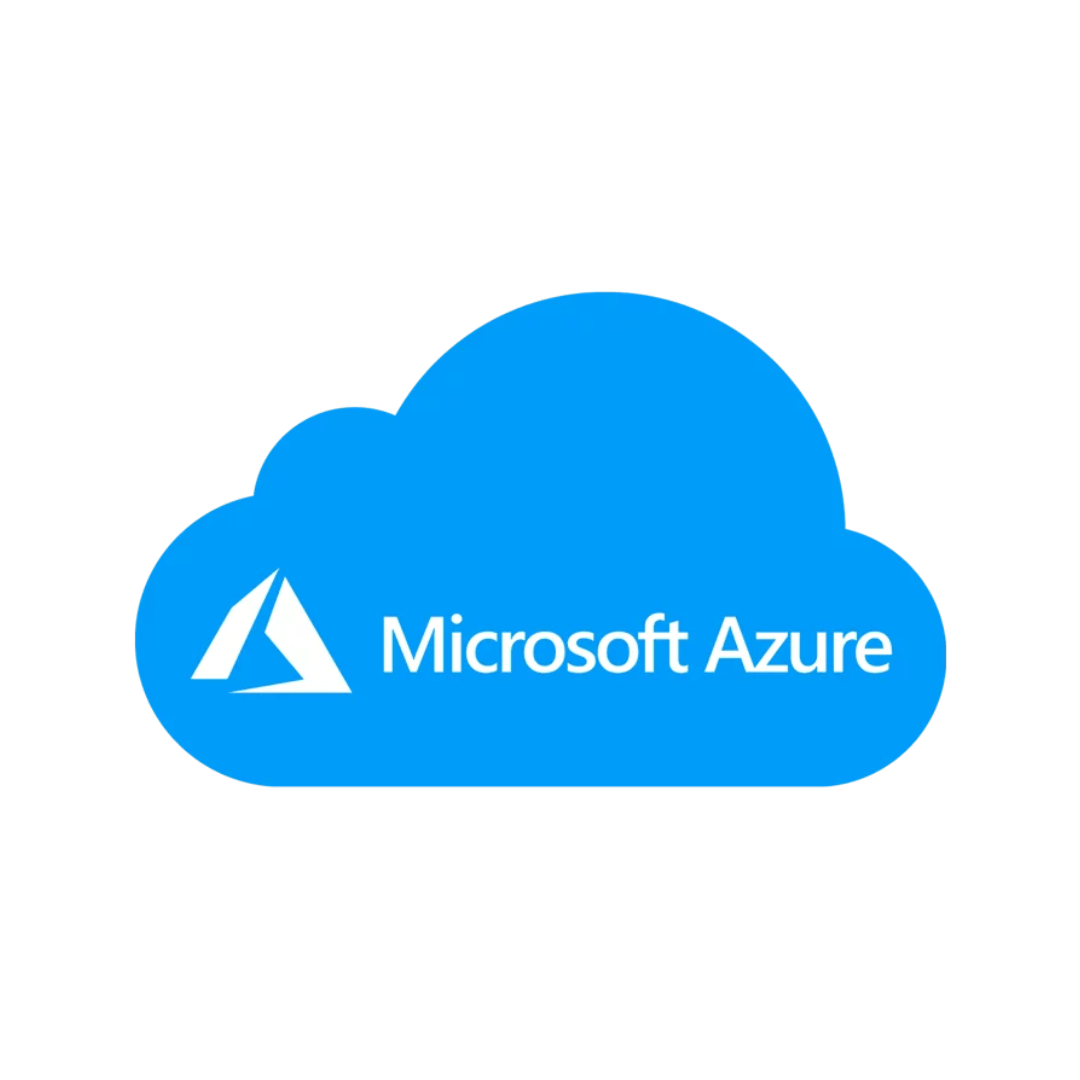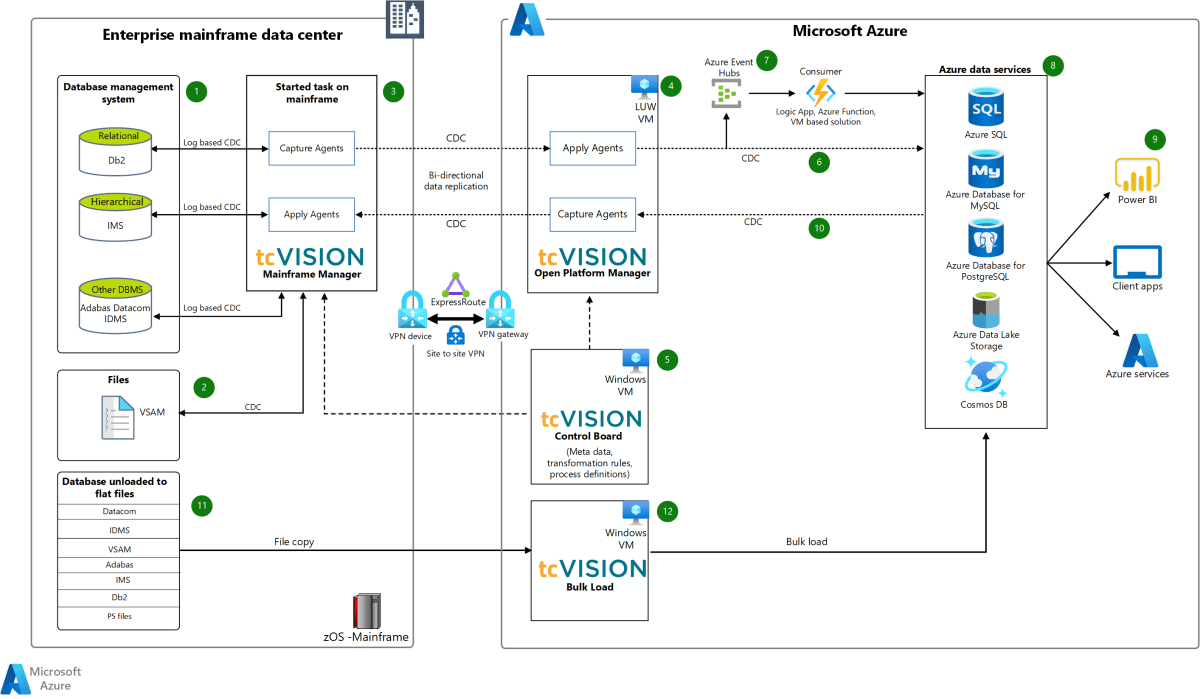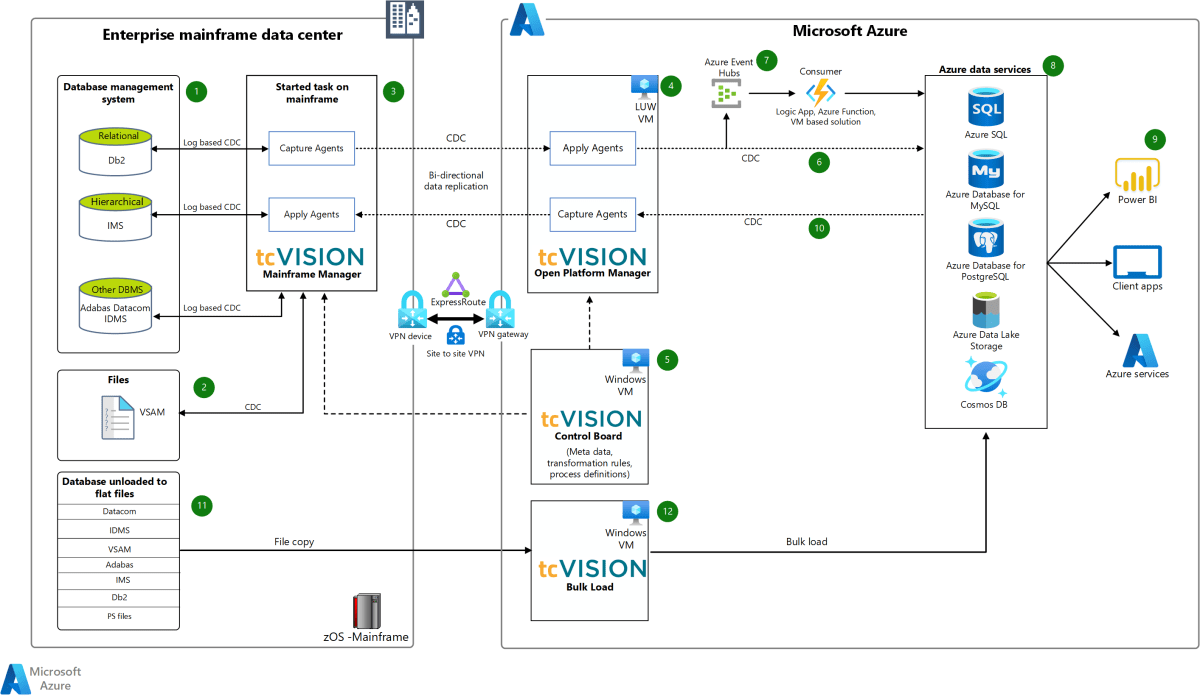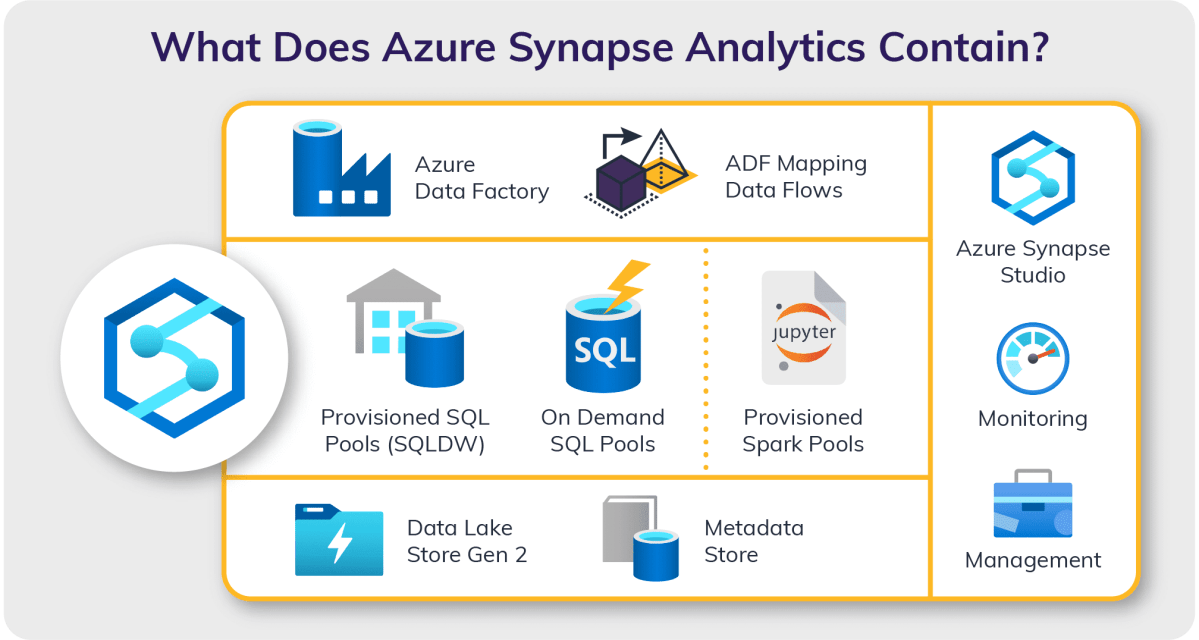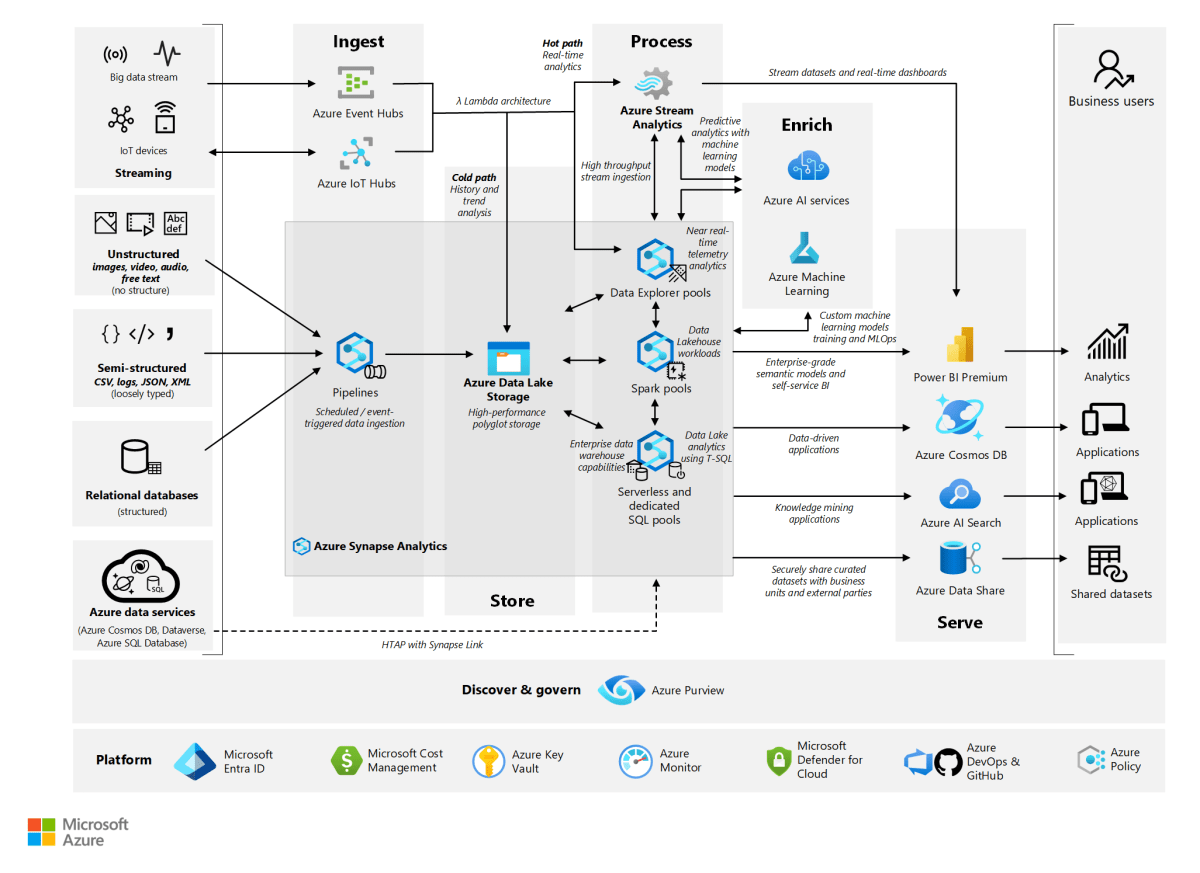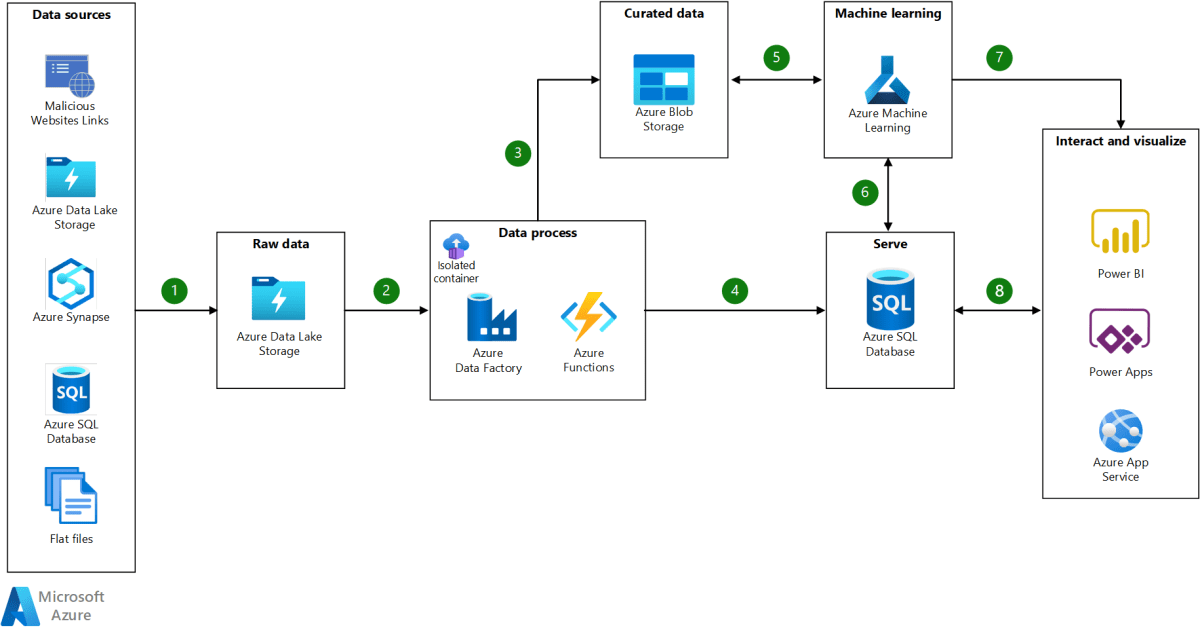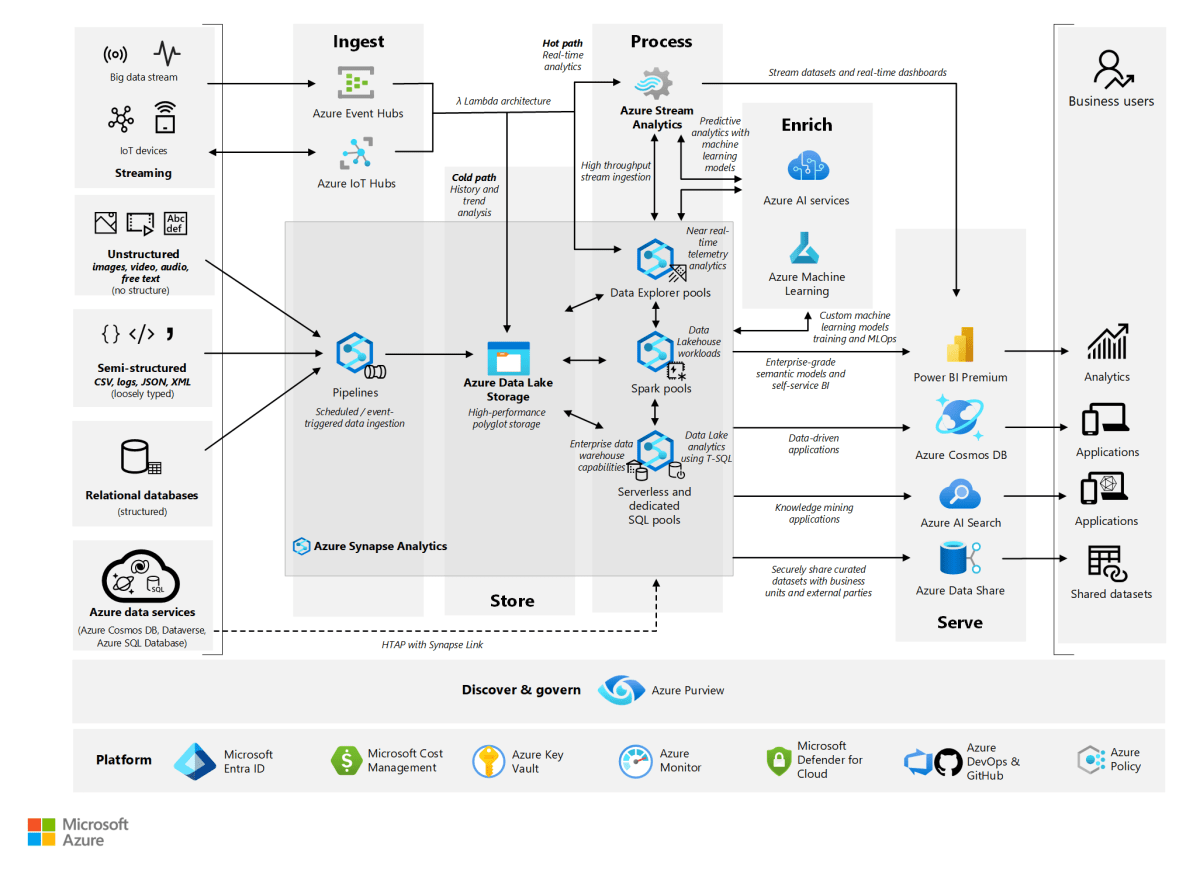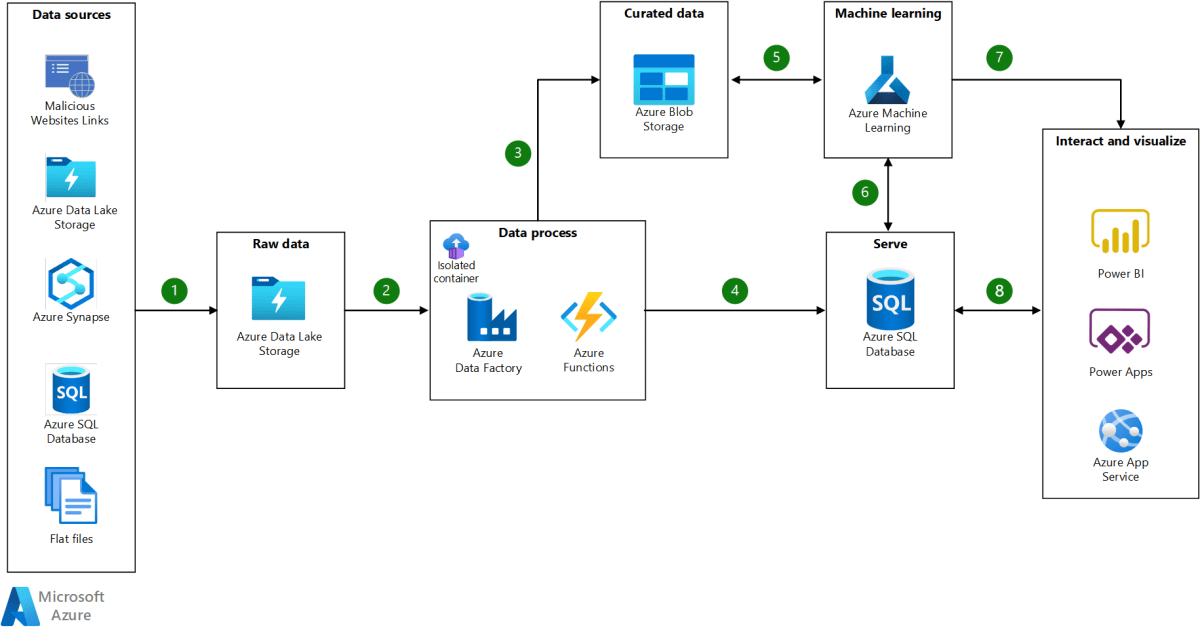Azure Kubernetes Service : 7 Powerful Benefits You Can’t Ignore
Welcome to the future of container orchestration in the cloud. Azure Kubernetes Service (AKS) is transforming how businesses deploy, scale, and manage containerized applications with unmatched efficiency and reliability.
What Is Azure Kubernetes Service (AKS)?

Azure Kubernetes Service (AKS) is Microsoft’s managed Kubernetes offering on the Azure cloud platform. It simplifies the deployment, management, and scaling of containerized applications using Kubernetes, the industry-standard orchestration system. By abstracting away much of the complexity involved in running Kubernetes clusters, AKS allows developers and operations teams to focus on building and delivering applications rather than managing infrastructure.
Core Components of AKS
Understanding the architecture of AKS is essential to leveraging its full potential. The service is built on several key components that work together seamlessly to deliver a robust container orchestration environment.
Azure Kubernetes Service (AKS) – Azure Kubernetes Service (AKS) menjadi aspek penting yang dibahas di sini.
Control Plane: Managed entirely by Microsoft, the control plane includes the Kubernetes API server, scheduler, and etcd datastore.You don’t manage or pay for these components directly, which reduces operational overhead.Node Pools: These are groups of virtual machines (VMs) that run your containerized workloads..
You can configure multiple node pools with different VM sizes, operating systems, and scaling policies to meet diverse application needs.Kubelet and Container Runtime: Each node runs the kubelet agent and a container runtime like containerd, which pulls and runs containers as directed by the control plane.How AKS Differs from Self-Managed KubernetesRunning Kubernetes on your own infrastructure—or even on virtual machines in the cloud—requires significant expertise and ongoing maintenance.AKS eliminates many of these challenges by offering a fully managed control plane..
For example, with self-managed Kubernetes, you’re responsible for upgrading the API server, managing etcd backups, and ensuring high availability. In contrast, Azure handles all control plane management tasks, including automatic patching, upgrades, and monitoring. This not only reduces the risk of downtime but also frees up your team to focus on application development.
Azure Kubernetes Service (AKS) – Azure Kubernetes Service (AKS) menjadi aspek penting yang dibahas di sini.
“AKS allows enterprises to harness the power of Kubernetes without the operational burden of managing the control plane.” — Microsoft Azure Documentation
Key Features of Azure Kubernetes Service (AKS)
Azure Kubernetes Service (AKS) stands out in the crowded cloud-native landscape due to its rich set of features designed for enterprise-grade performance, security, and scalability. These features make AKS a top choice for organizations looking to modernize their applications.
Automated Kubernetes Upgrades and Patching
One of the most time-consuming aspects of managing Kubernetes is keeping the cluster up to date with the latest security patches and version upgrades. AKS simplifies this process by offering automated upgrades for both the control plane and node pools.
You can choose between rapid, standard, and stable upgrade channels depending on your risk tolerance. The rapid channel provides the latest Kubernetes versions quickly, while the stable channel ensures higher reliability with thoroughly tested releases. This flexibility allows teams to balance innovation with stability.
Azure Kubernetes Service (AKS) – Azure Kubernetes Service (AKS) menjadi aspek penting yang dibahas di sini.
Additionally, AKS supports scheduled maintenance windows, so upgrades can be applied during off-peak hours to minimize disruption to production workloads.
Integrated Monitoring and Logging with Azure Monitor
Visibility into your cluster’s performance is critical for troubleshooting and optimization. AKS integrates seamlessly with Azure Monitor, providing deep insights into cluster health, node performance, and application behavior.
With Azure Monitor for Containers, you can collect metrics such as CPU and memory usage, monitor container logs, and set up alerts based on custom thresholds. This integration enables proactive issue detection and faster resolution times.
Azure Kubernetes Service (AKS) – Azure Kubernetes Service (AKS) menjadi aspek penting yang dibahas di sini.
For example, if a pod is consuming excessive memory, Azure Monitor can trigger an alert and even initiate an automated response via Azure Automation or Logic Apps. This level of observability is essential for maintaining service level objectives (SLOs) in production environments.
Role-Based Access Control (RBAC) and Azure AD Integration
Security is a top priority in any cloud deployment, and AKS delivers robust identity and access management capabilities. By integrating with Azure Active Directory (Azure AD), AKS enables fine-grained access control using Kubernetes RBAC and Azure role assignments.
This means you can assign specific permissions to users or groups based on their roles—for example, allowing developers to deploy applications while restricting their ability to modify cluster settings. This principle of least privilege enhances security and reduces the risk of accidental or malicious changes.
Azure Kubernetes Service (AKS) – Azure Kubernetes Service (AKS) menjadi aspek penting yang dibahas di sini.
Moreover, AKS supports managed identities, eliminating the need to manage service principal credentials manually. This reduces the attack surface and simplifies identity management across your cloud resources.
Why Choose Azure Kubernetes Service (AKS) Over Alternatives?
With several managed Kubernetes services available—including Amazon EKS and Google GKE—why should organizations choose Azure Kubernetes Service (AKS)? The answer lies in its deep integration with the broader Azure ecosystem, hybrid capabilities, and enterprise-focused features.
Seamless Integration with Azure Services
AKS is not an isolated service; it’s deeply embedded within the Azure platform. This means you can easily connect your AKS clusters to other Azure services such as Azure Blob Storage, Azure SQL Database, Azure Application Gateway, and Azure DevOps.
Azure Kubernetes Service (AKS) – Azure Kubernetes Service (AKS) menjadi aspek penting yang dibahas di sini.
For instance, you can use Azure Disk CSI drivers to provision persistent storage for stateful applications, or integrate with Azure Key Vault to securely manage secrets. This tight integration reduces complexity and accelerates development cycles.
Additionally, AKS works well with Azure Arc, enabling you to manage Kubernetes clusters across on-premises, edge, and multi-cloud environments from a single control plane. This hybrid capability is a game-changer for organizations with distributed infrastructure.
Cost Efficiency and Pricing Model
A common misconception is that managed Kubernetes services are expensive. However, AKS is priced competitively, charging only for the worker nodes (VMs) and associated resources like storage and networking. The control plane is free of charge, which significantly reduces costs compared to self-managed solutions.
Azure Kubernetes Service (AKS) – Azure Kubernetes Service (AKS) menjadi aspek penting yang dibahas di sini.
Furthermore, AKS supports cost-saving features such as:
- Virtual Node: Allows you to run containers directly on Azure Container Instances (ACI), enabling rapid scaling without provisioning VMs.
- Cluster Autoscaler: Automatically adjusts the number of nodes based on workload demand, ensuring you only pay for what you use.
- Spot Instances: Use low-priority VMs for fault-tolerant workloads to reduce compute costs by up to 90%.
These features make AKS not only powerful but also cost-effective for a wide range of use cases.
Enterprise-Grade Security and Compliance
For regulated industries such as finance, healthcare, and government, compliance is non-negotiable. AKS meets a broad range of compliance standards, including GDPR, HIPAA, ISO 27001, SOC 1/2/3, and FedRAMP.
Azure Kubernetes Service (AKS) – Azure Kubernetes Service (AKS) menjadi aspek penting yang dibahas di sini.
Microsoft invests heavily in security, offering features like:
- Azure Policy for Kubernetes: Enforce organizational standards and assess compliance at scale.
- Network Policies: Control traffic between pods using Calico or Azure Network Policies.
- Confidential Computing: Run encrypted workloads using Intel SGX or AMD SEV technologies.
These capabilities ensure that AKS is not just secure by design but also compliant with global regulatory requirements.
Setting Up Your First Azure Kubernetes Service (AKS) Cluster
Getting started with Azure Kubernetes Service (AKS) is straightforward, even for those new to Kubernetes. Whether you prefer the Azure portal, Azure CLI, or infrastructure-as-code tools like Terraform, AKS provides multiple pathways to deployment.
Azure Kubernetes Service (AKS) – Azure Kubernetes Service (AKS) menjadi aspek penting yang dibahas di sini.
Using Azure CLI to Deploy an AKS Cluster
The Azure CLI is one of the fastest ways to create an AKS cluster. Here’s a step-by-step example:
- Install the Azure CLI from https://learn.microsoft.com/en-us/cli/azure/install-azure-cli.
- Login using
az login. - Create a resource group:
az group create --name myResourceGroup --location eastus. - Create the AKS cluster:
az aks create --resource-group myResourceGroup --name myAKSCluster --node-count 2 --enable-addons monitoring --generate-ssh-keys. - Connect to the cluster:
az aks get-credentials --resource-group myResourceGroup --name myAKSCluster.
Within minutes, you’ll have a fully functional AKS cluster ready to deploy applications.
Deploying Applications Using Helm and YAML
Once your cluster is up, you can deploy applications using Kubernetes manifests (YAML files) or Helm charts. Helm, often called the package manager for Kubernetes, simplifies the deployment of complex applications.
Azure Kubernetes Service (AKS) – Azure Kubernetes Service (AKS) menjadi aspek penting yang dibahas di sini.
For example, to deploy a simple Nginx web server:
apiVersion: apps/v1
kind: Deployment
metadata:
name: nginx-deployment
spec:
replicas: 2
selector:
matchLabels:
app: nginx
template:
metadata:
labels:
app: nginx
spec:
containers:
- name: nginx
image: nginx:latest
ports:
- containerPort: 80Apply this using kubectl apply -f deployment.yaml, and Kubernetes will schedule the pods across your nodes.
For more complex applications like WordPress or databases, Helm charts from the Artifact Hub can streamline deployment with pre-configured values and dependencies.
Azure Kubernetes Service (AKS) – Azure Kubernetes Service (AKS) menjadi aspek penting yang dibahas di sini.
Integrating CI/CD Pipelines with Azure DevOps
Continuous integration and continuous delivery (CI/CD) are essential for modern DevOps practices. AKS integrates seamlessly with Azure DevOps, GitHub Actions, and Jenkins to automate the build, test, and deployment pipeline.
In Azure DevOps, you can create a pipeline that:
- Builds your Docker image on code commit.
- Pushes the image to Azure Container Registry (ACR).
- Deploys the updated image to your AKS cluster using
kubectlor Helm.
This end-to-end automation ensures rapid, reliable, and repeatable deployments, reducing human error and accelerating time-to-market.
Azure Kubernetes Service (AKS) – Azure Kubernetes Service (AKS) menjadi aspek penting yang dibahas di sini.
Scaling and Managing Workloads in Azure Kubernetes Service (AKS)
One of the primary advantages of Kubernetes is its ability to scale applications dynamically. AKS enhances this capability with intelligent scaling features that respond to real-time demand.
Horizontal Pod Autoscaler (HPA)
The Horizontal Pod Autoscaler automatically increases or decreases the number of pod replicas based on observed CPU utilization or custom metrics like requests per second.
To enable HPA for a deployment:
Azure Kubernetes Service (AKS) – Azure Kubernetes Service (AKS) menjadi aspek penting yang dibahas di sini.
kubectl autoscale deployment nginx-deployment --cpu-percent=50 --min=2 --max=10This command tells Kubernetes to maintain between 2 and 10 replicas of the nginx-deployment, scaling up when CPU usage exceeds 50%.
You can also use custom metrics via the Kubernetes Metrics Server or Prometheus integration for more granular control.
Cluster Autoscaler
While HPA scales pods, the Cluster Autoscaler adjusts the number of nodes in your node pool. If pods cannot be scheduled due to insufficient resources, the autoscaler adds new nodes. Conversely, it removes underutilized nodes to save costs.
Azure Kubernetes Service (AKS) – Azure Kubernetes Service (AKS) menjadi aspek penting yang dibahas di sini.
To enable the cluster autoscaler during AKS creation:
az aks create n --resource-group myResourceGroup n --name myAKSCluster n --node-count 1 n --enable-cluster-autoscaler n --min-count 1 n --max-count 5This configuration ensures your cluster can grow to handle traffic spikes while staying within budget.
Virtual Nodes for Rapid Scaling
Sometimes, even the cluster autoscaler isn’t fast enough for sudden traffic surges. That’s where virtual nodes come in. Powered by Azure Container Instances (ACI), virtual nodes allow you to run pods directly in the cloud without provisioning VMs.
Azure Kubernetes Service (AKS) – Azure Kubernetes Service (AKS) menjadi aspek penting yang dibahas di sini.
By integrating ACI with AKS, you can offload bursty workloads instantly. For example, during a flash sale event, your e-commerce application can scale out to virtual nodes in seconds, then scale back down when demand drops.
Setting up virtual nodes requires enabling the virtual-node add-on and assigning pods to the virtual-node node pool using taints and tolerations.
Security Best Practices for Azure Kubernetes Service (AKS)
While AKS provides strong security out of the box, misconfigurations can still expose your workloads to risks. Following best practices is crucial to maintaining a secure environment.
Azure Kubernetes Service (AKS) – Azure Kubernetes Service (AKS) menjadi aspek penting yang dibahas di sini.
Enable Azure Defender for Containers
Azure Defender for Containers is a cloud-native security posture management (CNSPM) and threat protection service. It continuously scans your AKS clusters for vulnerabilities, misconfigurations, and suspicious activities.
It provides recommendations such as:
- Enabling network policies to restrict pod-to-pod communication.
- Using private clusters to hide the API server behind a private IP.
- Enforcing pod security policies (or pod security admission in newer versions).
Defender also integrates with Microsoft Sentinel for centralized security information and event management (SIEM).
Azure Kubernetes Service (AKS) – Azure Kubernetes Service (AKS) menjadi aspek penting yang dibahas di sini.
Use Network Policies and Private Clusters
By default, all pods in a Kubernetes cluster can communicate freely. To enforce zero-trust networking, use network policies to define allowed traffic patterns.
Azure supports two modes:
- Azure Network Policies: Integrated with Azure’s software-defined networking stack.
- Calico Network Policies: Offers more advanced policy rules and is ideal for complex microservices architectures.
Additionally, deploying private clusters ensures that the Kubernetes API server has no public endpoint, reducing exposure to the internet. This is especially important for production workloads handling sensitive data.
Azure Kubernetes Service (AKS) – Azure Kubernetes Service (AKS) menjadi aspek penting yang dibahas di sini.
Secure Image Registries and Use Pod Identity
Only pull container images from trusted registries like Azure Container Registry (ACR). Enable content trust (Notary) to ensure images are signed and haven’t been tampered with.
Instead of storing registry credentials in Kubernetes secrets, use Azure Container Registry Tasks with managed identities. Similarly, use Azure AD Pod Identity or Workload Identity to grant pods secure access to Azure resources without embedding credentials.
This approach follows the principle of least privilege and minimizes the risk of credential leaks.
Azure Kubernetes Service (AKS) – Azure Kubernetes Service (AKS) menjadi aspek penting yang dibahas di sini.
Real-World Use Cases of Azure Kubernetes Service (AKS)
Azure Kubernetes Service (AKS) is not just a theoretical platform—it’s being used by organizations worldwide to solve real business challenges. From startups to Fortune 500 companies, AKS powers a wide variety of applications.
Microservices Architecture at Scale
Many enterprises are breaking down monolithic applications into microservices to improve agility and scalability. AKS provides the ideal platform for managing hundreds or thousands of microservices.
For example, a global retail company uses AKS to run separate services for user authentication, product catalog, order processing, and payment gateways. Each service is independently deployable, scalable, and resilient, enabling faster innovation and reduced downtime.
Azure Kubernetes Service (AKS) – Azure Kubernetes Service (AKS) menjadi aspek penting yang dibahas di sini.
CI/CD and DevOps Automation
Software development teams leverage AKS as part of their CI/CD pipelines. By combining AKS with Azure DevOps or GitHub Actions, teams achieve rapid feedback loops and automated rollbacks.
A fintech startup, for instance, deploys multiple times per day to AKS, using canary releases and blue-green deployments to minimize risk. Automated testing and monitoring ensure that only stable builds reach production.
Hybrid and Multi-Cloud Deployments with Azure Arc
Not all workloads can move to the cloud immediately. Azure Arc allows organizations to extend AKS management to on-premises and edge locations.
Azure Kubernetes Service (AKS) – Azure Kubernetes Service (AKS) menjadi aspek penting yang dibahas di sini.
A manufacturing company uses Azure Arc to manage AKS clusters running in their factory data centers. This enables centralized policy enforcement, monitoring, and updates across all environments, ensuring consistency and compliance.
What is Azure Kubernetes Service (AKS)?
Azure Kubernetes Service (AKS) is a managed container orchestration service that simplifies deploying, managing, and scaling containerized applications using Kubernetes on Microsoft Azure. It handles the control plane management, allowing users to focus on their applications.
Azure Kubernetes Service (AKS) – Azure Kubernetes Service (AKS) menjadi aspek penting yang dibahas di sini.
How much does AKS cost?
AKS itself is free—the control plane is provided at no cost. You only pay for the underlying resources such as worker node VMs, storage, networking, and optional services like monitoring or container instances.
Can I run AKS on-premises?
Azure Kubernetes Service (AKS) – Azure Kubernetes Service (AKS) menjadi aspek penting yang dibahas di sini.
While AKS runs in Azure, you can manage on-premises Kubernetes clusters using Azure Arc-enabled Kubernetes, which extends AKS-like management capabilities to any environment.
How do I secure my AKS cluster?
Best practices include enabling Azure Defender for Containers, using network policies, deploying private clusters, integrating with Azure AD, and leveraging managed identities for secure access to Azure resources.
Azure Kubernetes Service (AKS) – Azure Kubernetes Service (AKS) menjadi aspek penting yang dibahas di sini.
What’s the difference between AKS and Azure Container Instances (ACI)?
AKS is a full Kubernetes orchestration platform for complex, scalable applications, while ACI allows you to run individual containers without managing servers. AKS can integrate with ACI via virtual nodes for burst scaling.
In conclusion, Azure Kubernetes Service (AKS) is a powerful, secure, and cost-effective platform for running containerized applications at scale. Its deep integration with the Azure ecosystem, automated operations, and enterprise-grade features make it a top choice for organizations embracing cloud-native development. Whether you’re building microservices, automating CI/CD, or managing hybrid environments, AKS provides the tools and flexibility needed to succeed in today’s fast-paced digital landscape. By following best practices in security, scaling, and deployment, teams can unlock the full potential of Kubernetes without the operational overhead. As cloud adoption continues to grow, AKS will remain a cornerstone of modern application architecture on Azure.
Azure Kubernetes Service (AKS) – Azure Kubernetes Service (AKS) menjadi aspek penting yang dibahas di sini.
Recommended for you 👇
Further Reading:
